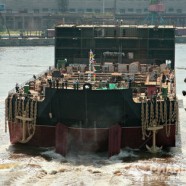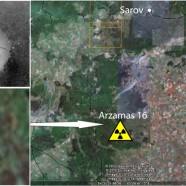The death of the nuclear energy
For the last 30 years France and Japan have been steadily forging on towards a dazzling and unlimited nuclear energy.
Fast breeder reactors down, reprocessing of spent fuel, unnecessary reserves of plutonium, reactors packed up like sardines, internal discharges of waste and spent fuel, the Japanese and French governments have not stopped to consolidate, to reinforce, to encourage, to support, to complement, to glorify and to deceive each other in the field of civil nuclear power.
The radioactive particles which are escaping from the Fukushima power plant originate from mixed fuel consisting of uranium and plutonium made in France at Marcoule by AREVA.
Mox
In the long history of cooperation between France and Japan on nuclear issues, one should not forget MOX fuel which contains enriched uranium and plutonium. In October 1999, MOX shipments were transported by sea between Cherbourg and Japan. The Pacific Teal delivered MOX fuel, in the port of Okuma, which was destined for Fukushima, the very site where the nuclear reactors exploited by Tepco are in a state of crisis. The October 1999 delivery took place a couple of hours after a major accident on the Tokai-Mura nuclear site, today Tokai-Mura is also affected by the domino events following the earthquake and tsunami. In 1999, the Japanese government reduced communication on the subject and played down the effects on the workers 2 of whom were killed after exposure to radiation.
Contamination of sea resources
Both the n°2 and n°3 reactors at the Fukushima-Daiichi site have a 750 MW capacity, almost the double of the reactor n°1. It is thus probable that explosions similar to the one which occurred in the building of reactor n°1 would be more devastating and would release larger doses of radiation.
The reactor n°1 at Onagawa has a capacity of 498 MW and reactors n°2 and n°3 796 MW ; the reactors at Onagawa are also in a state of emergency.
In 2001 the co-director of the Nuclear Department in the Japanese Ministry and the head of the Japanese Nuclear and Industrial Safety Agency (NISA) wrote that “The nuclear plants are designed to withstand earthquakes by keeping at the adequate security level measures such as the shutting down of the nuclear reactor, the cooling down and the confinement of radioactive substances whatever the seismic solicitations conceivable on this particular site.” (Journal “Contrôle“ n° 142 French Nuclear Safety Authority Autorité de Sûreté Nucléaire française.)
Nuclear reactors and outside threats
Robin des Bois would like to express their deepest sympathy towards the people of Japan.
Nuclear reactors are not sufficiently protected against outside climatic or geologic threats such as earthquakes, floods, cyclones and storms, massive snow falls and forest fires (1).
When looking at earthquakes, the understanding and the modelling of terrain movements and deformations has greatly improved over the last 20 years. Most of the nuclear reactors in the area affected by the earthquake which recently hit Japan were built between 1967 and 1981. The reactor n°1 at Fukushima-Daiichi which to date causes the most concern was built in 1967. Consequently, Fukushima-Daiichi was not built under new regulations developed through experience concerning anti-seismic construction. In Japan, the destruction of housing which were not constructed with these earthquake resistant requirements is planned. On the contrary, old nuclear reactors have a de facto prolonged lifespan following the French Japanese doctrine on the continuation of exploitation of nuclear plants. Early November 2010, the French and Japanese nuclear authorities met in Tokyo to coordinate the particularities of the implementation of prolonged lifespan reactor exploitation.
Nuclear Power Plants Floating Around the World
The first Russian Floating Nuclear Power Plant (FNPP) was launched at the end of June 2010 (photo #1), the two nuclear reactors with a capacity of 35 MW x2 will be installed, according to the Russian authorities, before 2012. However delays are possible. This new nuclear activity is worrying, particularly because dealing with radioactive waste from Russian ice breakers and nuclear submarines as well as their dismantling continue to be a heavy burden.
“Forest Fires: Beware the Radioactive Fallout”
The site Arzamas-16 is threatened by forest fires since the middle of July 2010. The exact location of the storage and waste on the site is unknown. The current management of plutonium storage, enriched uranium and nuclear warheads are the subject of diverging information. The military site is in activity since 1946. For more than half a century, experiments and nuclear activities have left undeniable traces on the site (see the assembly of photos). If the fire reaches strategic and radioactive sectors this could spark a major event but also cause global contamination. The Russian government and fire fighters lack of insight to foresee the risk caused by the fires around this dangerous site and to control them is shocking.












